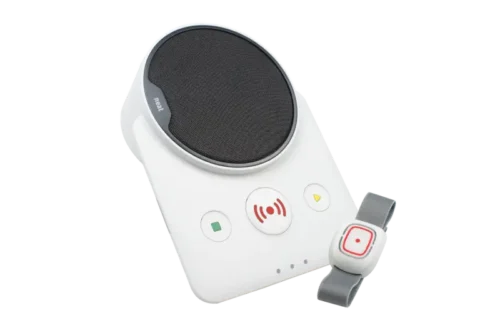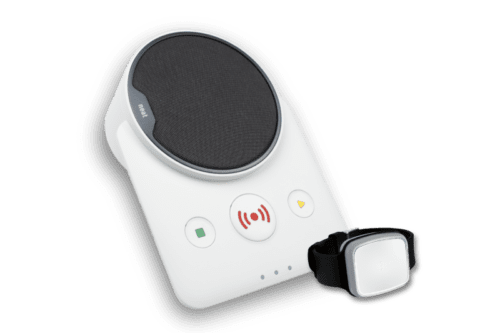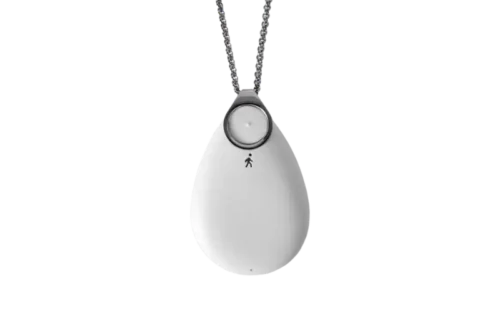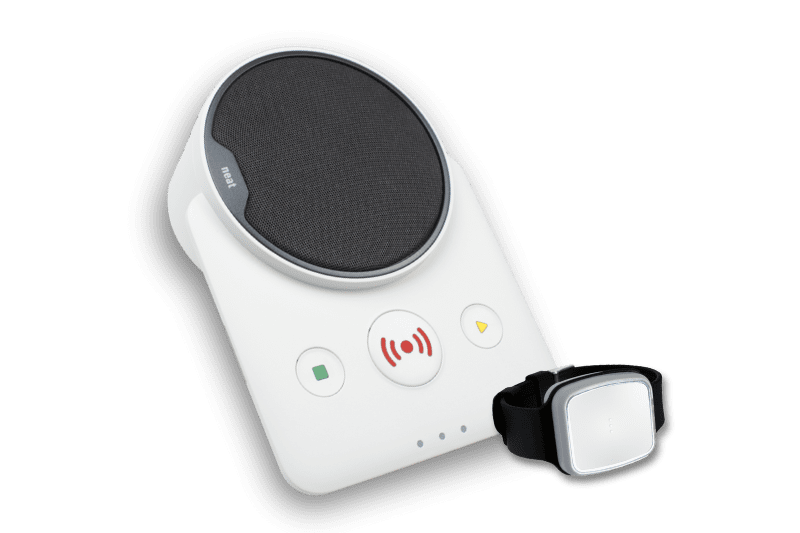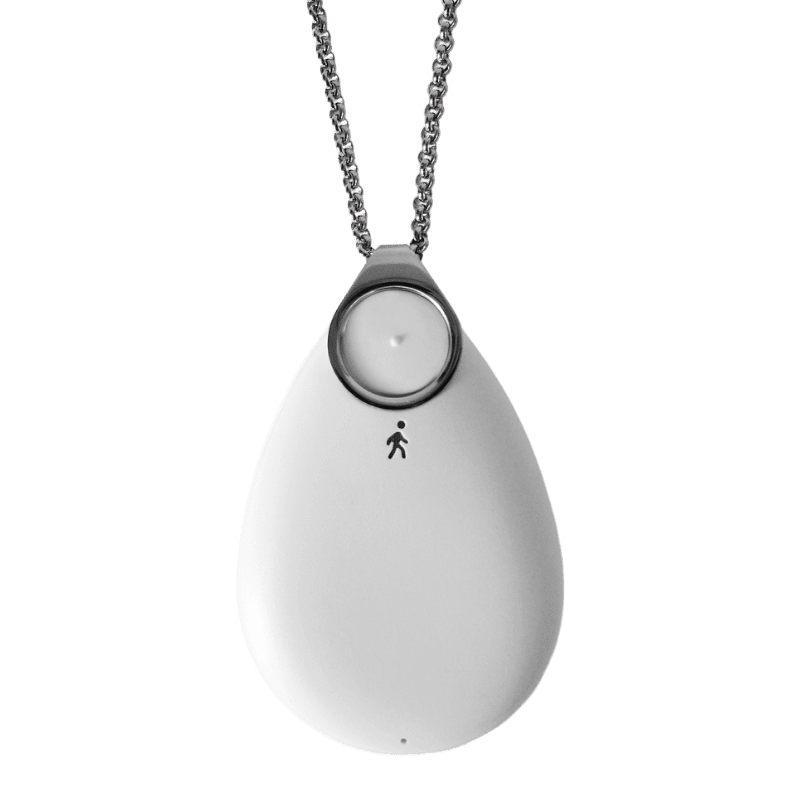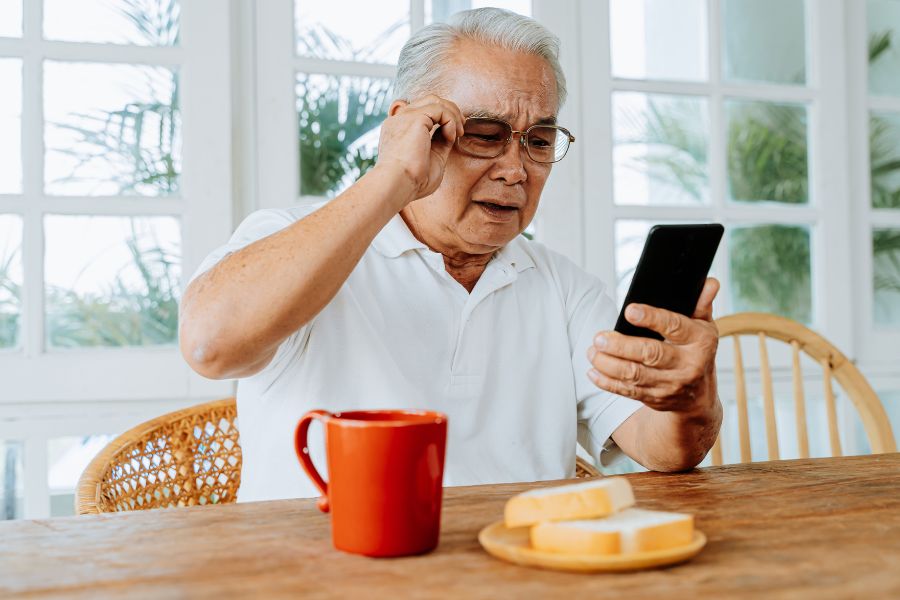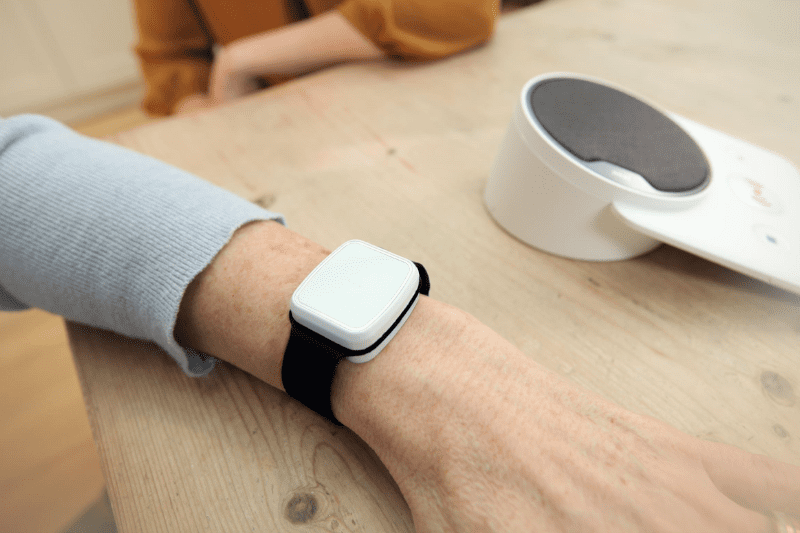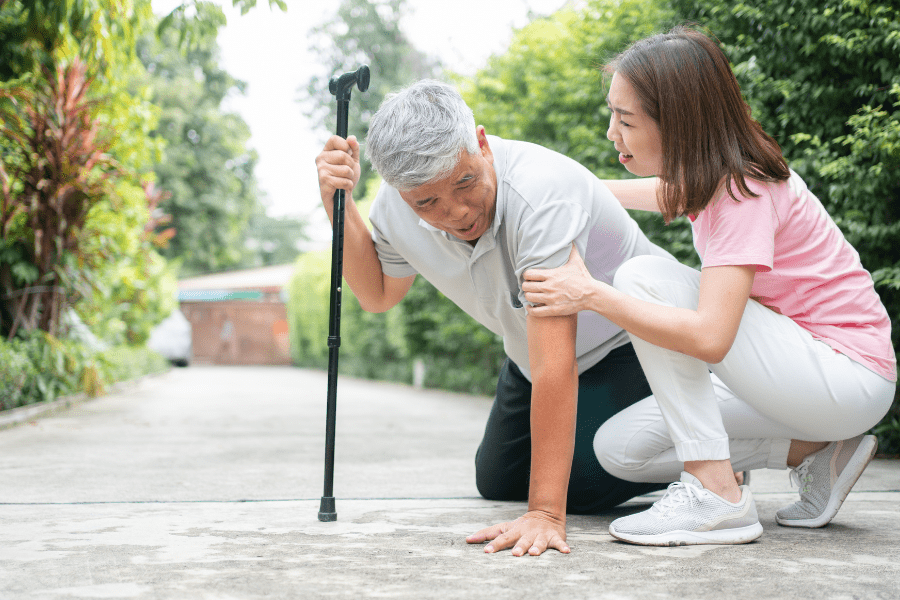
Fall alarm devices have become an indispensable tool for older people and individuals with mobility problems who want to live independently while ensuring their safety. These devices can detect falls and alert emergency services, keyholders, caregivers, or family members so they can be sure help will arrive if needed. However, many people doubt the accuracy of fall alarm devices, especially when it comes to slow falls, deep falls, slumping, or crumpling.
In this article we look at the accuracy of fall alarm devices and how they work to detect falls.
Contents
Different types of Fall Alarms
There are a number of devices on the market that you may come across when shopping for a personal alarm that can automatically detect falls. What you may not know is that these typically fall into one of two groups: stay-at-home personal alarms that are designed to work only in your house, or mobile personal alarms that you can take with you and use away from the home.
For the purposes of this article, we’re going to use the two Fall Alarm devices that are available from Telecare24 as our examples of in-home and on-the-go alarms.
Both of these devices are designed to provide assistance during a fall and, depending on where you buy them, alert keyholders, caregivers, or a careline service such as Telecare24 who can also contact the emergency services if the situation requires. Also, both of these devices are wearable and are waterproof.
Let’s take a moment to consider their similarities and differences.
1. In-home Fall Alarms
The Vibby fall alarm from Legrand is a wearable fall sensor that is designed to be worn on the wrist like a watch. The device uses advanced sensors and algorithms to detect heavy falls and distinguish them from normal movements, reducing the likelihood of false alarms.
When a serious fall is detected, the Vibby automatically sends an alert to the 24/7 monitoring centre. Then the monitoring centre staff can then contact a keyholder or emergency services, depending on the user’s situation.
The Vibby also has an emergency panic button, which can be pressed manually during an emergency. It raises an alert to our trained staff located in the 24/7 monitoring centre. Within a very short time, they will start speaking to the user through the loudspeaker on the base unit. Vibby does not have the capability of two-way communication from the wearable device itself.
Vibby devices will work up to a range of up to 200 metres from the base unit, depending on your home set up. This is perfectly enough for most homes and gardens but not suitable for other outdoor activities away from your home.
2. Fall Alarms for when you’re on the go
The Go Active! GPS alarm, is a device made by Chiptech. Like the in-home device, it is also a personal safety alarm but with a key difference – this device is designed to give the user peace of mind not while out and about as well by leveraging GPS technology.
The device is small and lightweight, making it easy to wear as a necklace. The GO Active! GPS alarm plan from Telecare24 includes the device, along with 24/7 monitoring service.
Similar to the Vibby, the Chiptech GO Active! also detects falls and automatically sends an alert to the 24/7 monitoring centre. The monitoring centre can then assess the situation and take appropriate action. This may include contacting emergency services or notifying the user’s emergency contacts. The device uses GPS tracking technology to provide the user’s location in an emergency, allowing help to be sent quickly if needed.
The device is easy to use and requires no technical expertise. To activate the alarm manually, the user may simply press a panic button on the device, which also sends an alert to the monitoring centre. Go Active! GPS alarm devices do not have a base unit. Rather, it comes with a built-in SIM card and utilises the mobile phone network for two-way communication from the device itself.
The GO Active! GPS alarm comes ready to use with the automatic fall sensor turned on, providing you additional peace of mind.
Which one is right for you?
The Vibby and GO Active! GPS alarms are two different devices designed to provide personal safety and security to users in different situations. The Vibby fall alarm is designed to detect falls and notify caregivers or family members when a fall occurs. This makes it a suitable choice for seniors or individuals with mobility issues. Meanwhile, the GO Active! GPS alarm is designed to provide personal safety while out and about. This makes it a suitable choice for individuals who may be at risk of fall or physical harm or for those who work in remote locations.
Both devices have unique features tailored to specific needs, and it is important to consider these features when choosing between the two devices. The Vibby fall alarm uses advanced sensors and algorithms to detect falls and distinguish them from normal motion, reducing the likelihood of false alarms. When a fall is detected, the Vibby automatically sends an alarm to the monitoring centre, and the monitoring centre staff can contact a keyholder or emergency services, depending on the user’s situation. However, communication is only possible via the base unit, which may not be as convenient for some users.
On the other hand, the GO Active! GPS alarm also detects falls automatically and sends an alert to the monitoring centre. The device uses GPS tracking technology to provide the user’s location in an emergency, allowing help to be sent quickly if needed. The device is easy to use and requires no technical expertise, and two-way communication can be done from the device itself. This feature allows for faster and more efficient communication between the user and the monitoring centre staff.
The Deciding Factors
When deciding which device is right for you, it’s important to consider your lifestyle, medical needs, and daily routine. If you are someone who is at risk of falls, particularly seniors or individuals with mobility issues, the Vibby fall alarm may be the right choice for you. However, if you spend a lot of time outdoors or in remote locations, the GO Active! GPS alarm may be the better choice. The two-way communication feature of the GO Active! GPS alarm allows for faster and more efficient communication with the monitoring centre staff, which can be particularly useful in emergency situations.
Ultimately, the decision between a Vibby fall alarm or a GO Active! GPS alarm will depend on your individual needs and situation. It’s important to carefully evaluate the features of each device and consider how they fit into your daily routine. By choosing the right device, you can have peace of mind knowing that help is just a button press away.
How Fall Alarm Devices Work
Fall alarm devices typically use a combination of sensors to detect falls. The most common sensors used are accelerometers, which measure changes in motion and can detect sudden movements or impacts. Some fall alarm devices also use gyroscopes, which measure orientation and can detect changes in position.
The sensors in fall alarm devices are typically combined with algorithms that analyse the sensor data to determine if a fall has occurred. These algorithms are designed to filter out normal movements, such as walking or sitting down. They only trigger an alert if a sudden and unexpected movement is detected. When a fall is detected, the fall alarm device sends an alert to the monitoring centre. Some fall alarm devices also include GPS tracking, which can help emergency services locate the person wearing the device.
How Accurate are Fall Alarm Devices?
Fall alarm devices are generally accurate at detecting falls. However, there are some limitations to their accuracy, especially when it comes to slow falls, low falls, slumps, or crumples. The accuracy of fall alarm devices can vary depending on a number of factors, including the type of sensors used, the quality of the algorithms, and where the device is located on the person using it, or how it is being worn.
For example, there are situations when somebody loses their strength but manages to grab onto something and slowly lay down. When slow falls occur they may not be detected as a fall because the person’s gradual movement doesn’t meet the threshold for a fall. However, if the user remembers to press the button on the device then it will activate. Many people, especially those who have dementia, forget they have it and don’t think to press it.
Low falls, or falls from a seated or standing position, may also be more difficult for fall alarm devices to detect. This is because they don’t involve the sudden movement that is typically associated with falls. In addition, slumps or crumples, which can indicate a loss of consciousness or a medical emergency, may not be detected by some fall alarm devices.
There are some modern fall alarm devices which are designed to detect a range of different types of falls more accurately than others. However, it needs to be acknowledged that there are no fall detection devices which can detect slow falls, low falls, slumps, and crumples with 100 percent accuracy. After reading all this information, you may be thinking, ‘If so, is it worthwhile having a fall alarm device?’
Benefits of Fall Alarm Devices
Although there are limitations of fall alarm devices, they still greatly benefit those at risk of falling. For older ones or people with disabilities who live alone, fall alarms provide additional safety and security. It also gives them peace of mind and allows independence for longer. Moreover, fall alarms provide reassurance to caregivers or family members who worry about their loved one’s safety.
In addition, fall alarms can reduce the risk of serious injury or death as a result of a fall, especially if the person is unable to get up or call for help on their own. By activating an alarm or contacting emergency services, fall alarms can help ensure that prompt medical assistance is provided promptly. This may potentially prevent further complications or may even prove to be life saving.
What about the accuracy of fall alarm devices from Telecare24? Are they reliable when it comes to the slow fall? We are proud to mention that at Telecare24, we only use reliable, best-in-class equipment that has been widely tested.
Conclusion
Fall alarm devices are an important tool for seniors and individuals with mobility issues. It enables them to live independently while securing their safety. The accuracy of fall alarm devices is limited. However, if you choose the right product and service, they can detect a number of different types of falls, including some slow falls, deep falls, slumps, and collisions.
The Telecare24 Fall Alarm and GO Active! GPS Alarm plans both use advanced sensors and algorithms to detect falls as accurately as possible, including some but not all slow falls, low falls, and slumping. Once a fall is detected, our team receives an alert and contacts the user to enquire about their well-being. If necessary, emergency services will be contacted immediately.
Thank you for taking time to read this article. We hope you found helpful information. To find similar information, please visit our blog.
